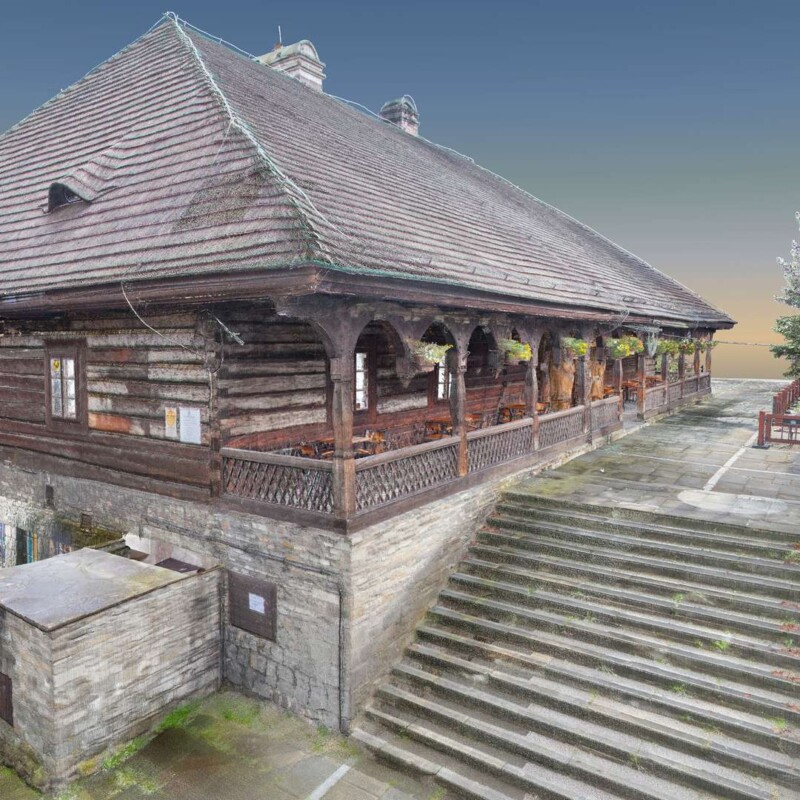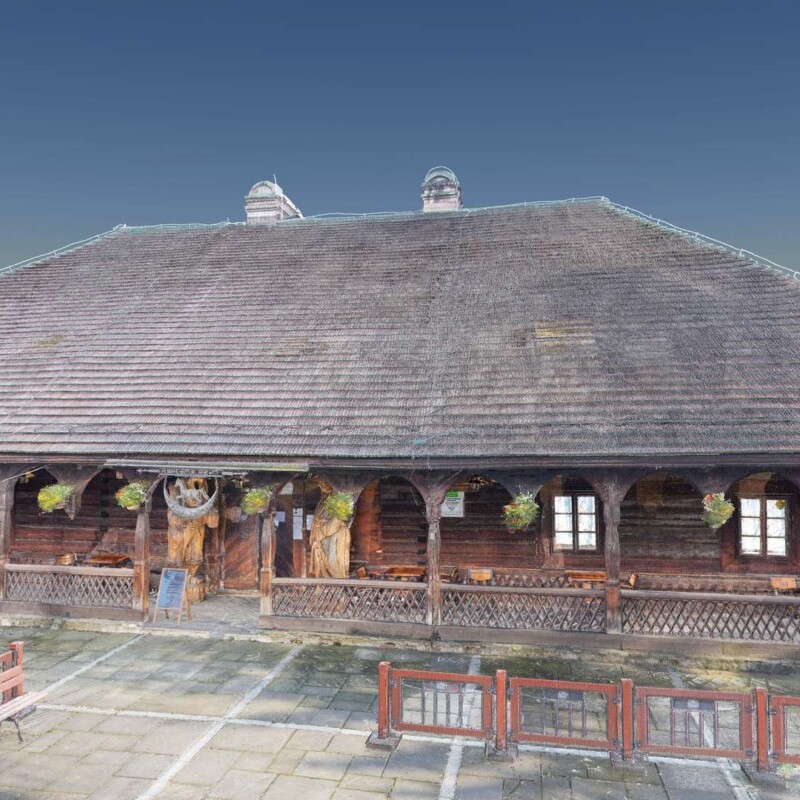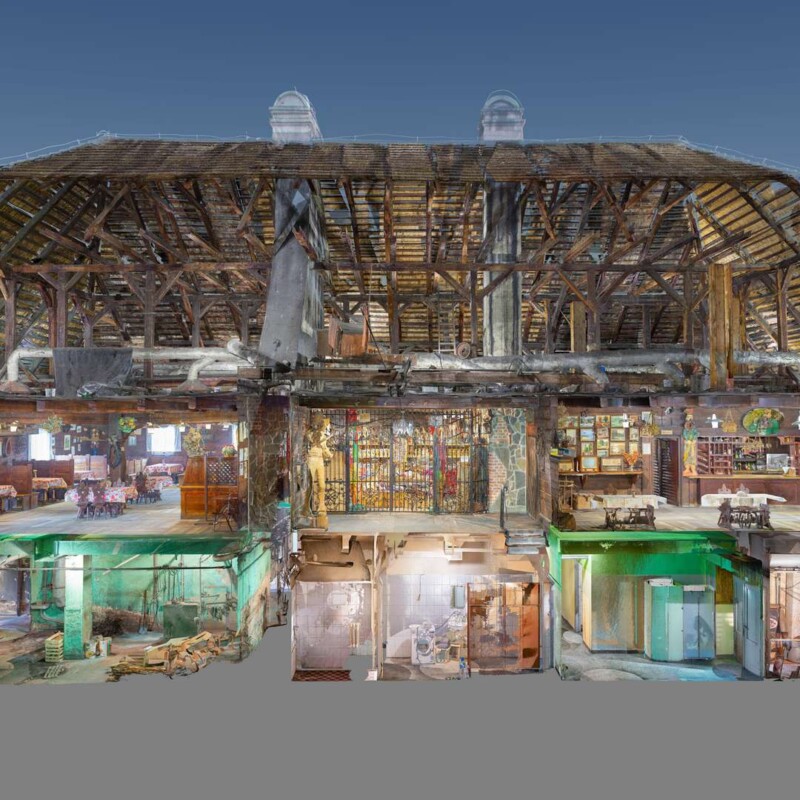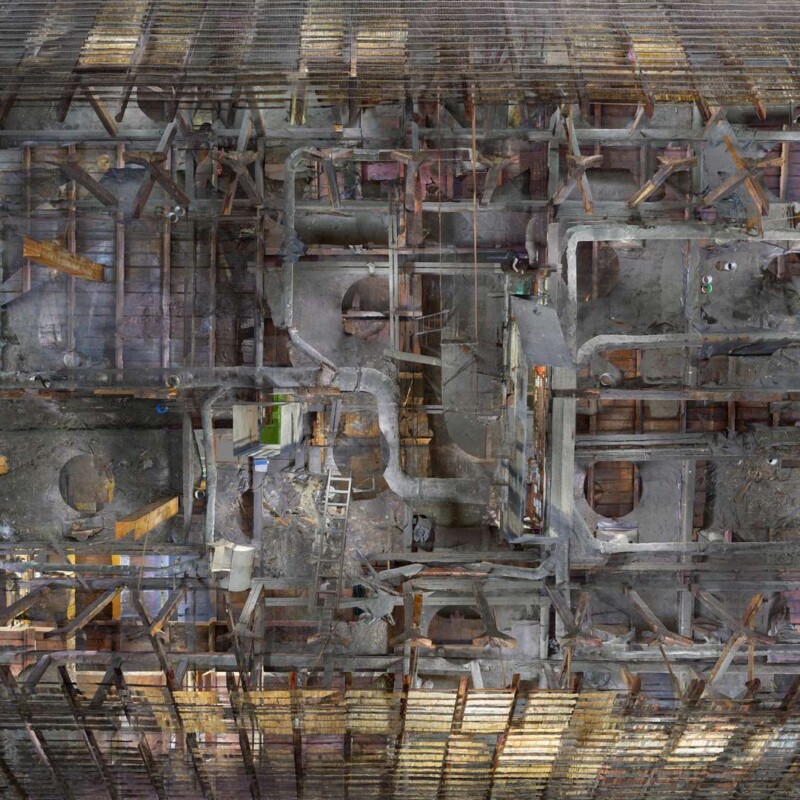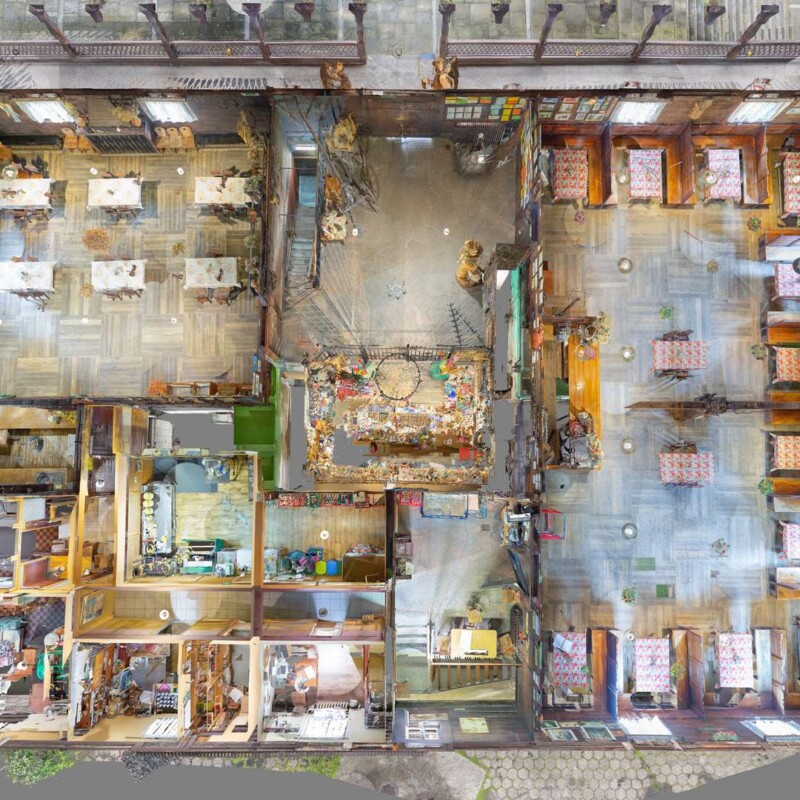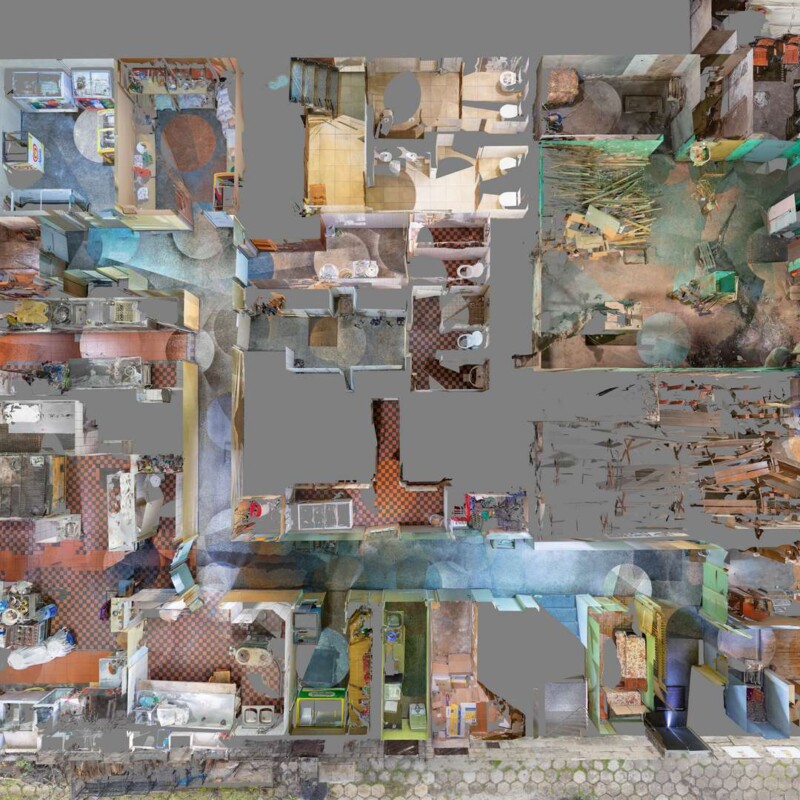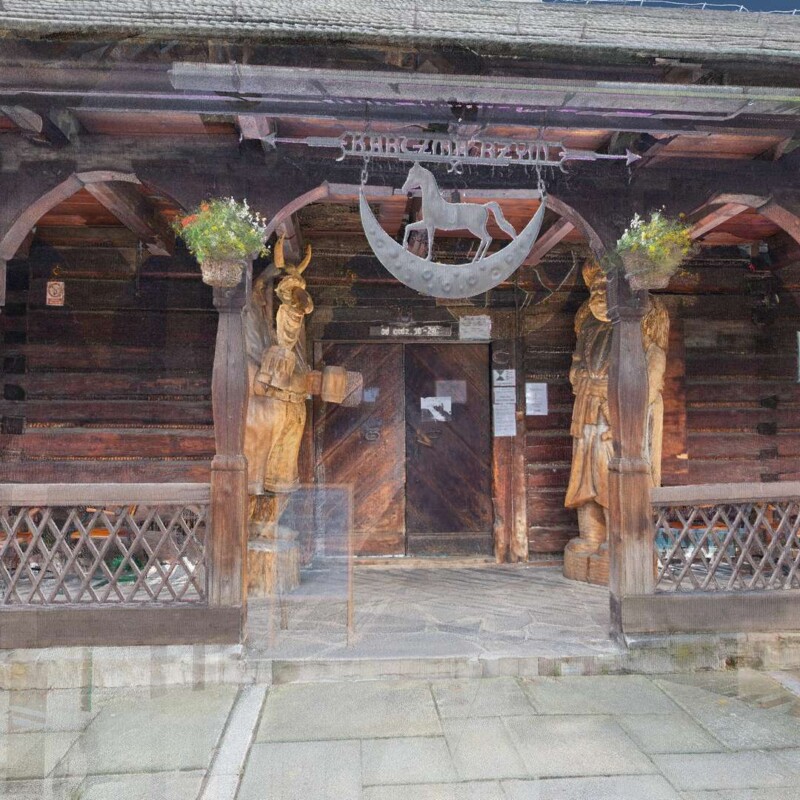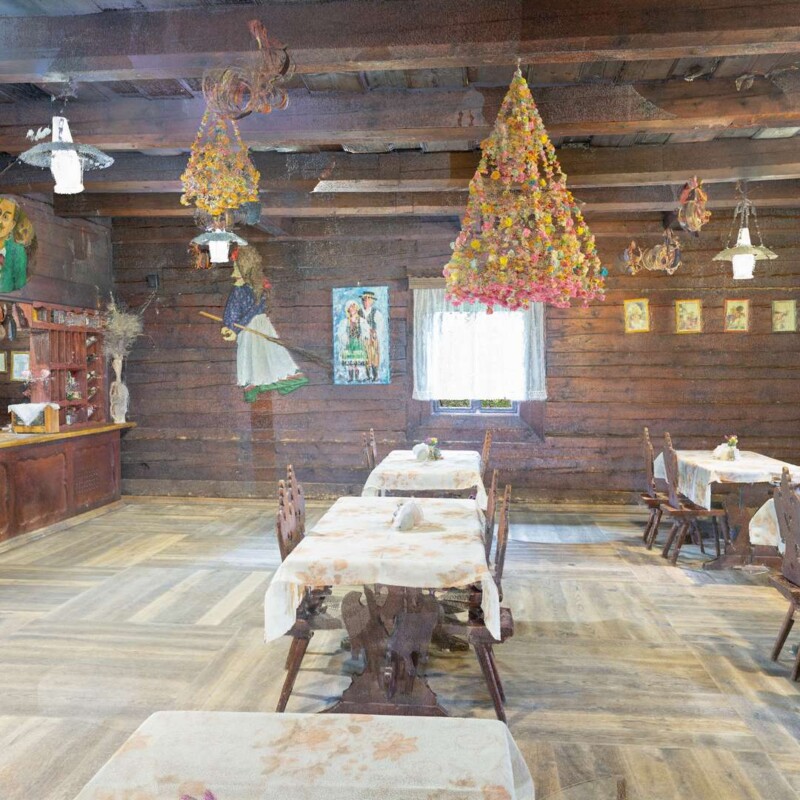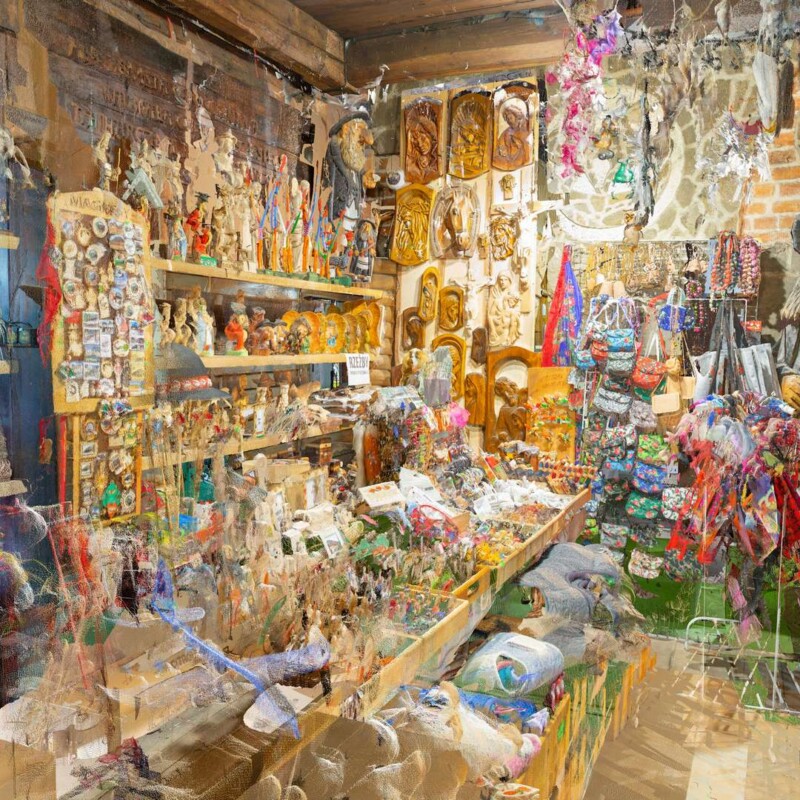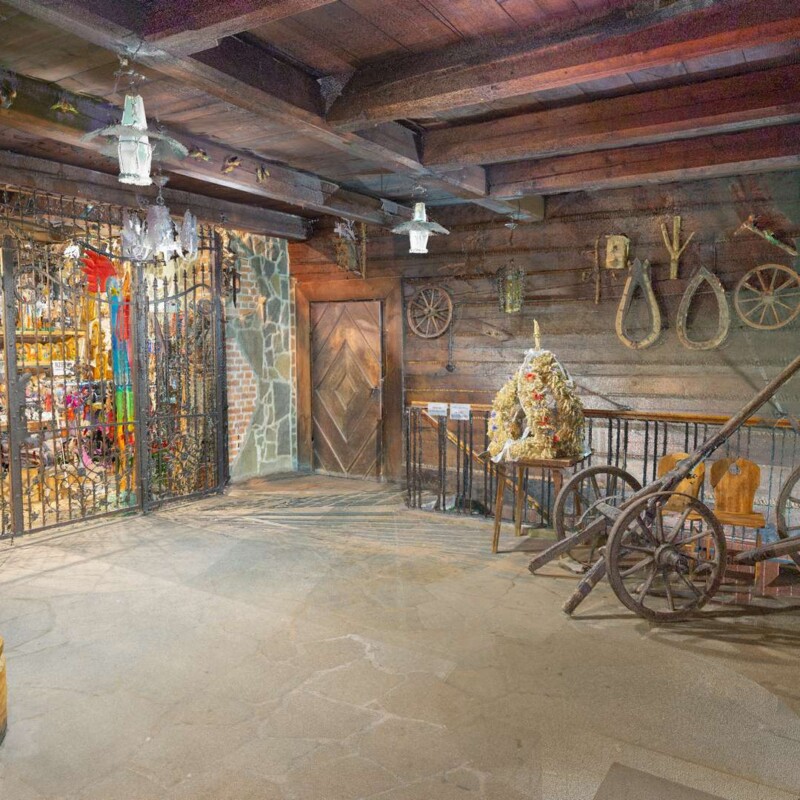Karczma “Rzym” (“Rome Tavern”), Sucha Beskidzka
Rome is a legendary inn, inseparably connected with the character Pan Twardowski, the Polish sorcerer who signed a pledge with the devil. Is this the same early 18th century wooden inn that we are standing in front of now? We don’t know. What we do know is that for sure is that the inn was built at a crossroads where traditional markets and fairs were held. Only some time later did this place become an urban market.
The inn building was established at the beginning of the 18th century, when horse markets were organised in Sucha. At that time, merchants from the area would come and trade. After the market, they headed to the inn on the market square. Once upon a time, inns were a common part of the rural landscape.
About 70-80 percent of Beskid villages had them. They were a place to meet and get refeshments. They played an important role for travellers, being a staged coach house and providing accommodation. Inns usually stood at popular marketplaces located on trade routes.
The building consists of an entrance hall, a dining room and a main hall. During World War II, the front and sides of the Rome Inn were plastered.
The back was whitewashed, and its roof was covered with tar paper. At the end of the 1960s the building was renovated, restoring its original appearance. The inn was then given its current name, referring to the legend of Pan Twardowski, who was supposed to meet Mephistotle in an inn with the name Rome.
The Rome Inn is undoubtedly a valuable example of wooden architecture.
It is a unique example of a former inn of outstanding artistic value. It is the oldest wooden restaurant in Poland.
Application – a virtual walk around the obejct
The Rome Inn is one of the buildings that surrounds the town square and it stands on a stone foundation. Only the wooden façade from the west faces the market square. The single-story building, covered with a hipped roof, has a rectangular plan. The longer side is 30 m long and shorter side, approximately 20 m long. Some of the walls are covered with shingles – small, overlapping panels. From the front and from the north, the protruding edges of the roof are supported by pillars and form arcades. The quadrangular pillars have a slightly barreled shape in the middle. The semicircular arches of the arcades run between them. Near the pillars leading to the entrance there are two wooden sculptures. They are almost equal in height. On the left, a portly devil with two mugs of beer smiles. On the right is a nobleman with a thick moustache, wearing a fur hat. He is dressed in a kontusz, a long robe. At his belt hangs a curved sabre. The interior of the inn is impressive with its mysteriousness. In the vast space there are a dozen or so wooden tables and several dozen chairs.
Most of the chairs have semi-circular backs. The backs of the other chairs are symmetrically cut out around the edges and have holes in the shape of hearts. Paper decorations are suspended from the ceiling beams. They are shaped like bunches of colourful herbs with pink and yellow flowers. Also hanging are folk cockerels made of strips of wood coloured yellow, red, orange, green and blue. The panel walls are decorated with reliefs painted in vivid colours. They include a standing figure of a nobleman wearing a red feathered cap and a green, knee-length kontusz robe. Another figure is a slender, long-haired angel in a blue dress. The bar forms a semi-open room with a counter in the middle. On the sides of the counter and on the back wall, there are many shelves filled with bottles full of liquor. The atmosphere is so full of mystery, you can feel the spirit of old times so strongly that you can almost believe in the legend of Pan Twardowski. This famous nobleman was almost seized by the devil himself.


